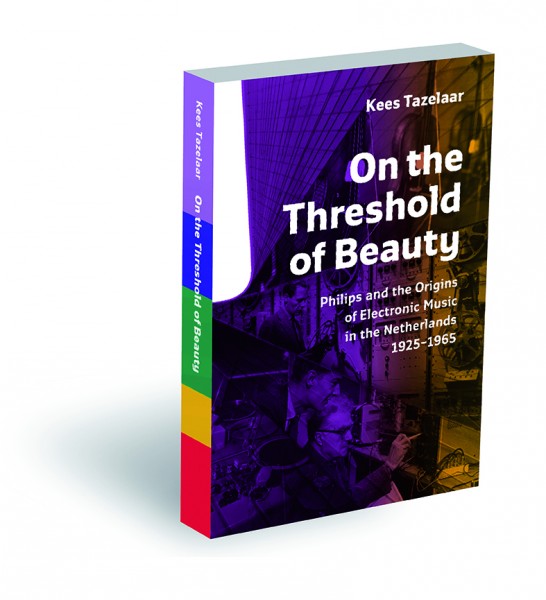Book Review: Tazelaar's On the Threshold of Beauty

If you're interested in electronic music, this is a great time to be alive and listening. Step by step, that old bromide that we can reduce the early history of electronic music to the cities of Paris and Cologne (and yes, that view is still alive and well) is giving way to a wider and more interesting picture.
Labels like Die Schachtel's Main series, BVhaast's Acousmatrix releases, the Omega Point Archive Series Obscure Tape Music of Japan releases, and the three-volume set Colección de Música Electroacústica Latinoamericana (which you can listen to/purchase here), and the Daniel Langlois Foundation's spectacular Latin American Electroacoustic Music Collection's collection of recordings, scores, and interviews are bringing the recordings right to our door, letting us hear seminal works by people we know, and - more importantly - people we haven't heard from.
Those recordings are amazing documents, but they run the danger that any history imagined backward from finished products does: the how and why of how it was that they came to us, together with a sense who their creators were.
Kees Tazelaar's book On the Threshold of Beauty: Philips and the Origins of Electronic Music in the Netherlands 1925-1965 is a great example of new scholarship that arrives alongside these new things to hear - in addition to a wealth of technical material, it tells us some amazing stories.
The book's three sections lay out a not only a sketch of how electronic music developed in the Netherlands (and it's a very different story than the one you're used to - for example, ask yourself who it was who manufactured the equipment those studios in Cologne and Paris were using ....), but also goes well beyond the local history.
Part one describes electroacoustic R&D at Philips Research Laboratories from the days of their first loudspeaker development in 1925, touching on the company's interest in content and media. The result of that interest was the creation of a special lab at Philips whose work centered on interest in technology’s effects on sound and in the creation and practice of music creation. Interested in research on stereo and surround sound in the early 20th century? It's all right here.
Part two centers on the production and performance of electronic music for the Philips Pavilion, commissioned for designed for Expo '58 in Brussels by Le Corbusier.
The third part traces how all that led to the origins of electronic tape music practice in the Netherlands by organizations and composers - the creation of permanent (and, in some cases, private) electronic music studios and related educational programs such as the Institute of Sonology.
That listing may sound like a set of descriptions of technical approaches and the creation of institutions, but it goes way beyond that - I find one of the unique things about the book is the way that Tazelaar includes stories about the complex relationships between (and among) technicians and composers, where the final products of their activity are the result of rivalry and moral positions as much as musical or technical ideals.
In that regard, the book's central section on the Philips Pavilion is worth the price of admission all by itself. It's a fascinating combination of history (hint: What does Benjamin Britten have to do with all of this, anyway?), mystery (Come on - haven't you actually wondered how on earth Le Courbusier and Varese and Xenakis actually got away with doing anything this avant-garde?), and rigorously researched technical detail about how the spatialization was actually done using 1950s technology (Go on, guess how they did it....).
And the book even comes with its own soundtrack - a collection of audio excerpts that track the stories you're reading (The chance to hear some of this is worth a visit to the site even if you don't read the book).
It was a great read, and it reminded me once again that the best scholarship reminds you that the word "history" always includes that little word "story."
by Gregory Taylor on October 13, 2015

